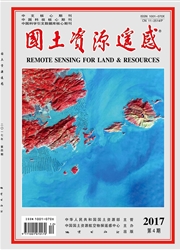

 中文摘要:
中文摘要:
如何确定合适的阈值来区分夜间辐射雾、晴空地表和中高云一直是雾检测研究的重点。圣巴巴拉DISORT大气辐射传输模型( Santa Barbara DISORT atmospheric radiative transfer,SBDART)可模拟雾顶亮度温度。基于该模型获取MODIS B20与B31波段的亮温差(brightness temperature difference,BTD),将其用于夜间辐射雾检测。以MODIS卫星数据为可行性试验数据,用国家卫星气象中心提供的地面验证数据进行验证,结果表明,使用该模型监测夜间雾的准确率达78.3%,误判率为21.7%,可靠性指标为0.643,Kappa系数为0.730。为进一步验证方法的稳定性,选取8景卫星序列图像进行时间序列分析,结果显示Kappa系数均值为0.744,说明应用当前阈值方法对MODIS夜间雾检测具有可适用性。该方法为夜间雾预报和夜间雾参数反演提供了有效的参考。
 英文摘要:
英文摘要:
How to obtain suitable threshold to distinguish radiation fog,clear sky surface and clouds is the focus of the study of fog detection. The Santa Barbara DISORT atmospheric radiative transfer( SBDART) model can simulate the fog top brightness temperature. In this paper,the authors obtained the brightness temperature difference( BTD) between MODIS B20 and MODIS B31 bands based on the model and applied it to the detection of radiation fog at night. The data used for feasibility test were from EOS MODIS satellite in the North China Plain on November 25, 2007,and ground validation data were from the National Satellite Meteorological Center. The varification results show that the accuracy of using the model to monitor the night time radiation fog (POD)is 78. 3%,the false alarm rate (FAR)is 21. 7%, the reliability index(CSI)is 0. 643,and the Kappa factor is 0. 730. To further validate the stability of the method,the authors selected the sequence of eight satellite images in northern China for the time series analysis. The results show that the mean value of reliability index is 0. 744,suggesting that the proposed method can serve as the foundation of night time fog forecasting and parameter inversion.
 同期刊论文项目
同期刊论文项目
 同项目期刊论文
同项目期刊论文
 期刊信息
期刊信息
